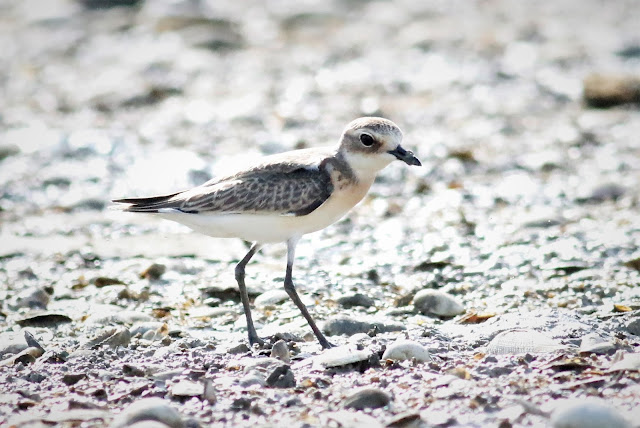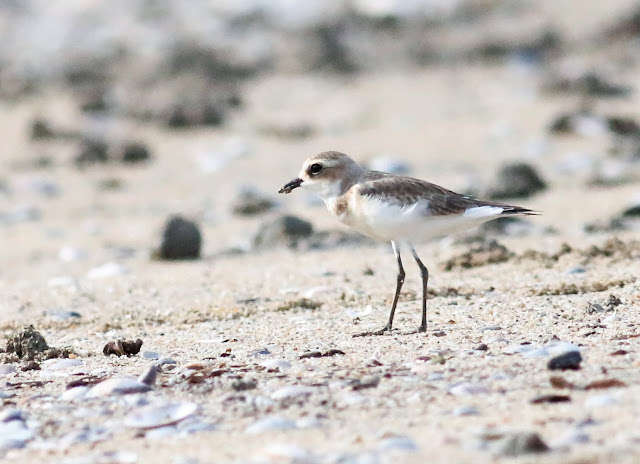This is the continuation of part 1... Most of them were Lesser Sand Plovers, Red-necked stints and a few new ones.
From afar I saw this big bird flying towards me. I could not determine what it is.
As it came nearer, I could see that it was a tern but not sure which one.
OMG ! I couldn't believe what I saw - it's a Caspian Tern ! This was seen on 28 August 2021 at KKM (Kedah) - the first record of this species at this place.
It did not land immediately but instead made a U-turn.
Luckily it decided to turn back together with a few Common Terns and Lesser Crested Tern.
It was already in its winter plumage.
What a tern it was to land here. The nearest known record of this tern was in 2016 at Teluk Air Tawar (near Bagan Belat area).
Experts or seasoned birders have identified the above tern as a Gull-Billed Tern. (I am not 100% sure actually).
The one in the forefront is a Greater Sand Plover - identified for me by the more experienced birders.
A Common Sandpiper is about to land. They too came in later than the first batch of waders which were seen here in July.
Common Redshank hitting the sunlight at the right moment.
(note: P8 of primary feathers is noticeable just emerging)
Who do you think will win the short sprint of 5 meters ?
Lesser Sand Plover
or
Red-necked Stint
This Lesser Sand Plover still spots some breeding colors. I believe they will change (into winter plumage) by late September onwards.
Some already changed apparently.
This is a smart and neat looking juvenile Lesser Sand Plover (above).
In between those LSP, there were a few Red-necked Stints.
Another juvenile LSP. Apparently the juveniles will fly in later than the adults.
They have long legs which can outrun any 'crabbies'.
The bigger scapulars of this LSP indicates that it is likely an adult bird and may have molt earlier before they arrived here.
Their legs may appear very thin at times.
Another LSP showing an uneven sort of wing molt
HAPPY WADERS DAY !

































No comments:
Post a Comment